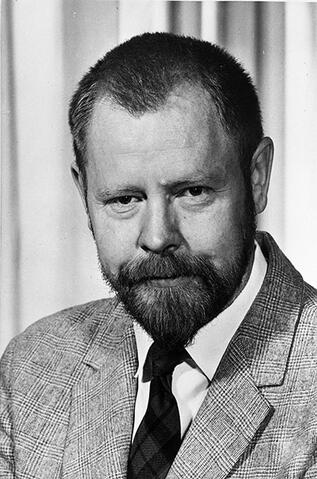
Zone du titre et de la mention de responsabilité
Titre propre
Art McKay - Portrait
Dénomination générale des documents
- Document graphique
Titre parallèle
Compléments du titre
Mentions de responsabilité du titre
Notes du titre
Niveau de description
Pièce
Cote
Zone de l'édition
Mention d'édition
Mentions de responsabilité relatives à l'édition
Zone des précisions relatives à la catégorie de documents
Mention d'échelle (cartographique)
Mention de projection (cartographique)
Mention des coordonnées (cartographiques)
Mention d'échelle (architecturale)
Juridiction responsable et dénomination (philatélique)
Zone des dates de production
Date(s)
-
Aug. 1964 (Production)
Zone de description matérielle
Description matérielle
1 photograph : b&w ; 18 x 12.5 cm
1 negative : b&w ; 12.5 x 10 cm
Zone de la collection
Titre propre de la collection
Titres parallèles de la collection
Compléments du titre de la collection
Mention de responsabilité relative à la collection
Numérotation à l'intérieur de la collection
Note sur la collection
Zone de la description archivistique
Nom du producteur
Historique de la conservation
Portée et contenu
Head and shoulders image of Art McKay, director, School of Art, Regina Campus.
Bio/Historical Note: Arthur Fortescue McKay, best known as Art McKay, was born in 1918 in Nipawin, Saskatchewan. His father was Joseph Fortescue McKay, a son of Angus McKay whose own grandfather was the younger John Richards McKay and whose grandmother was Harriet Ballenden. This and other ancestry would qualify McKay as an Anglo-Métis artist in Saskatchewan and in Canada. His mother, Georgina Agnes Newnham, was a daughter of another historical figure in Saskatchewan, the Anglican Bishop of Saskatchewan, Jervois Newnham. From an early age McKay drew landscape. His training in art began at the Provincial Institute of Technology and Art (now the Alberta University of the Arts) in Calgary (1946–1948), and later at the Académie de la Grande Chaumière in Paris (1949–1950), Columbia University in New York (1956–1957), and The Barnes Foundation in Merion, Pennsylvania (1956–1957). In 1952 McKay joined the staff of the Regina Art School (now the University of Regina). From 1951-1956 he was a lecturer in art at the University of Saskatchewan in Saskatoon. While there, McKay helped organize a series of Emma Lake Artists' Workshops in rural Saskatchewan. He became an associate professor in art there between 1956-1974, and director from 1964-1967. In 1978 he was an associate professor of art at the University of Regina. McKay received national and international attention as one of the painting group the Regina Five. The group's paintings were exhibited at the National Gallery of Canada in 1961 in a show titled "Five Painters from Regina". He was influenced in the 1960s by Barnett Newman, whom he, Ron Bloore, and Roy Kiyooka invited to the Emma Lake Artists' Workshop as guest artist in 1959. McKay's best known works are his scraped enamel circular and rectangular "mandalas", in which he uses relaxing, contemplative imagery to depict ideas related to Zen Buddhism. McKay was included in Clement Greenberg's 1964 "Post-Painterly Abstraction" exhibition. In the 1970s he continued to paint abstractions but also reintroduced the landscape in his work. In 1997, the MacKenzie Art Gallery mounted a national travelling exhibition, "Arthur F. McKay: A Critical Retrospective". His work is in many collections, both public and private, such as the National Gallery of Canada, Ottawa. McKay died in 2000 in Squamish, British Columbia.
Zone des notes
État de conservation
Source immédiate d'acquisition
Classement
Langue des documents
Écriture des documents
Localisation des originaux
Disponibilité d'autres formats
Restrictions d'accès
There are no restrictions on access.
Délais d'utilisation, de reproduction et de publication
Photographer: Unknown
Copyright holder: Unknown
Other terms: Responsibility regarding questions of copyright that may arise in the use of any images is assumed by the researcher.
Instruments de recherche
Éléments associés
Accruals
Location note
Vol. 81 / Neg. Vol. 12

